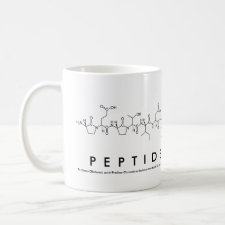
Authors: Carbone ME, Ciriello R, Moscarelli P, Boraldi F, Bianco G, Guerrieri A, Bochicchio B, Pepe A, Quaglino D, Salvi AM
Article Title: Interactions between elastin-like peptides and an insulating poly(ortho-aminophenol) membrane investigated by AFM and XPS.
Publication date: 2018
Journal: Analytical and Bioanalytical Chemistry
Volume: 410
Issue: (20)
Page numbers: 4925-4941.
DOI: 10.1007/s00216-018-1142-3
Abstract: This investigation was undertaken to explore the mutual recognition of the pentapeptide (ValGlyGlyValGly)n, a hydrophobic elastin-like peptide (ELP), suspended in deionized water in monomer (n = 1) and trimer (n = 3) forms and the outer surface of a very thin, insulating polymer, poly(ortho-aminophenol) (PoAP), electrochemically grown on a platinum foil by cyclic voltammetry in a neutral medium (phosphate-buffered saline, I = 0.1M) immersed in the suspension. As a prior task, the proved propensity of the ValGlyGlyValGly sequence, at the given minimal length (three or more repeats), to self-assemble into amyloid-like fibrils when solubilized in an aqueous environment was considered within the framework of testing PoAP surfaces for the specific detection of amyloid precursors. From our knowledge of the chemical structure and physical properties of both biomacromolecule families obtained in previous studies, we focused on the efficacy of the binding sites offered to ELP fibrils by PoAP in its as-prepared form or properly modified either by postsynthesis oxidation or by adsorption/entrapping of ELP monomer(s) with or without protecting terminal groups. Consistent with all methods of preparation, the best surfaces, recognizable by the trimer fibrils, are those modified to carry a larger number of carbonyls, particularly by entrapment of ELP monomer(s) during PoAP electrosynthesis using an imprinting-inspired method. The degree of attachment of fibrillar aggregates, detected by atomic force microscopy and X-ray photoelectron spectroscopy, provides unequivocal evidence of the cooperative forces involving PoAP-ELP interactions. The results obtained suggest the prospect of using the proposed Pt/PoAP/ELP systems as biodetectors in Alzheimer disease
Template and target information: peptide, pentapeptide, (ValGlyGlyValGly)n, elastin-like peptide, ELP
Author keywords: X-ray photoelectron spectroscopy, atomic force microscopy, Poly(ortho-aminophenol), Elastin-like peptides, Amyloids, Peptide-imprinted cyclic voltammetry polymerization



Join the Society for Molecular Imprinting

New items RSS feed
Sign-up for e-mail updates:
Choose between receiving an occasional newsletter or more frequent e-mail alerts.
Click here to go to the sign-up page.
Is your name elemental or peptidic? Enter your name and find out by clicking either of the buttons below!
Other products you may like:
 MIPdatabase
MIPdatabase









